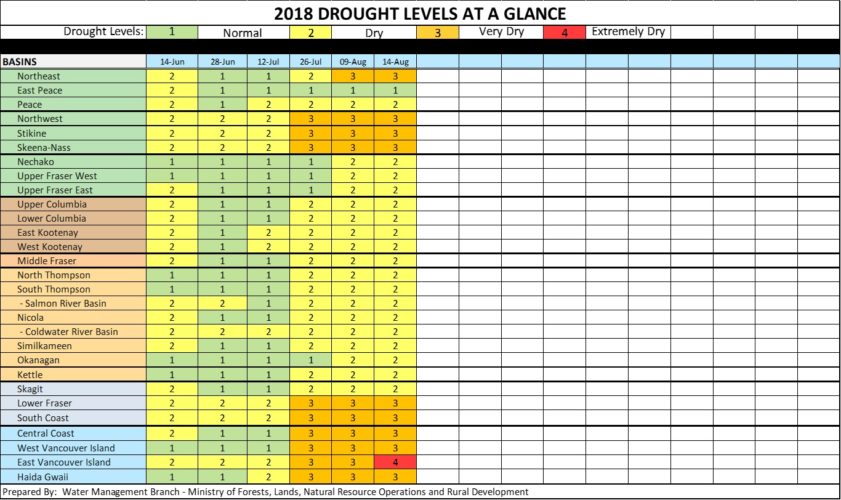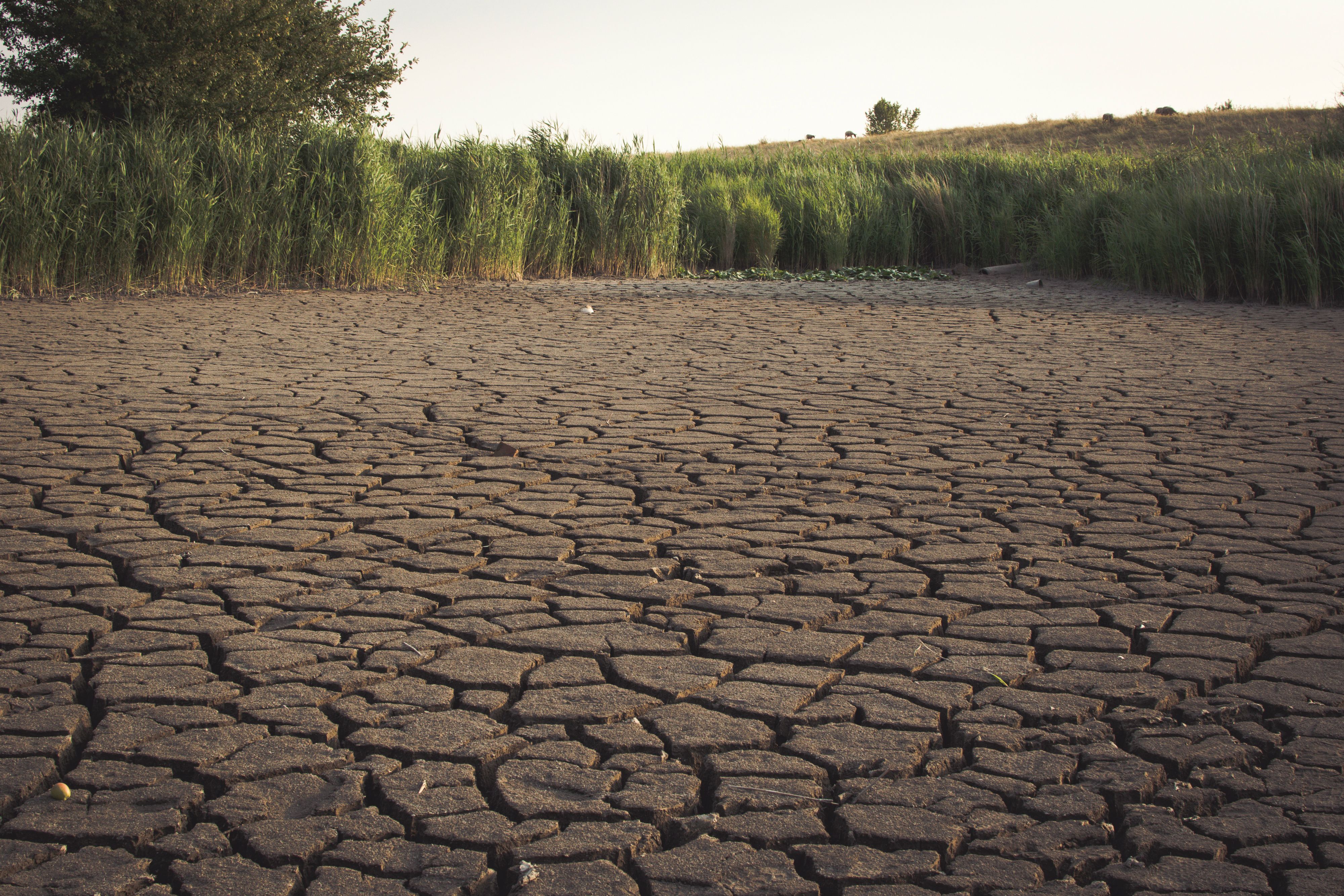Yesterday, B.C.’s Ministry of Forests, Lands, Natural Resource Operations and Rural Development announced that the drought condition of East Vancouver Island had been elevated to Level 4.
As a result, a maximum reduction of water use is recommended by the province and regulatory action may become necessary. West Vancouver Island remains at Level 3 and will be re-evaluated as conditions deteriorate.
The province has urged all surface water and groundwater users, including residents, industry, farmers and municipalities to voluntarily reduce water consumption.
If voluntary reductions of water use are not sufficient to maintain flows above critical levels, the province may consider regulating water usage under the Water Sustainability Act. Specific actions could include the temporary suspension of water licences or short-term water approvals to restore flows to minimum critical levels in the impacted streams.

A number of streams on Vancouver Island are at or near record-low flows for this point of the year. These include, but are not limited to, the Koksilah, Chemainus, San Juan, and Salmon rivers. Recent precipitation has been insufficient to halt the downward trend on all of the East Vancouver Island streams. The Ministry has stated that maximum water conservation is encouraged in these and other low-flow watersheds.
Ministry staff will continue to monitor river levels, and angling closures may go into effect if the warm temperatures continue to negatively impact stream flows and water supplies.
As well, the Ministry has reminded water users on all streams that water intakes must be screened to Fisheries and Oceans Canada standards so as to prevent fish from being pulled into water systems as water levels drop. Low water levels can impede the passage of salmon, increase susceptibility to disease, or cause stranding or death due to low oxygen and high water temperatures.
The province noted that municipal water conservation bylaws may differ from provincial water conservation targets, due to local water supply and demand, and the availability of storage (lakes and reservoirs) or groundwater. Officials encouraged local consumers to abide by municipal and regional bylaws.
More details on drought conditions throughout the province can be found on the province’s drought portal.









